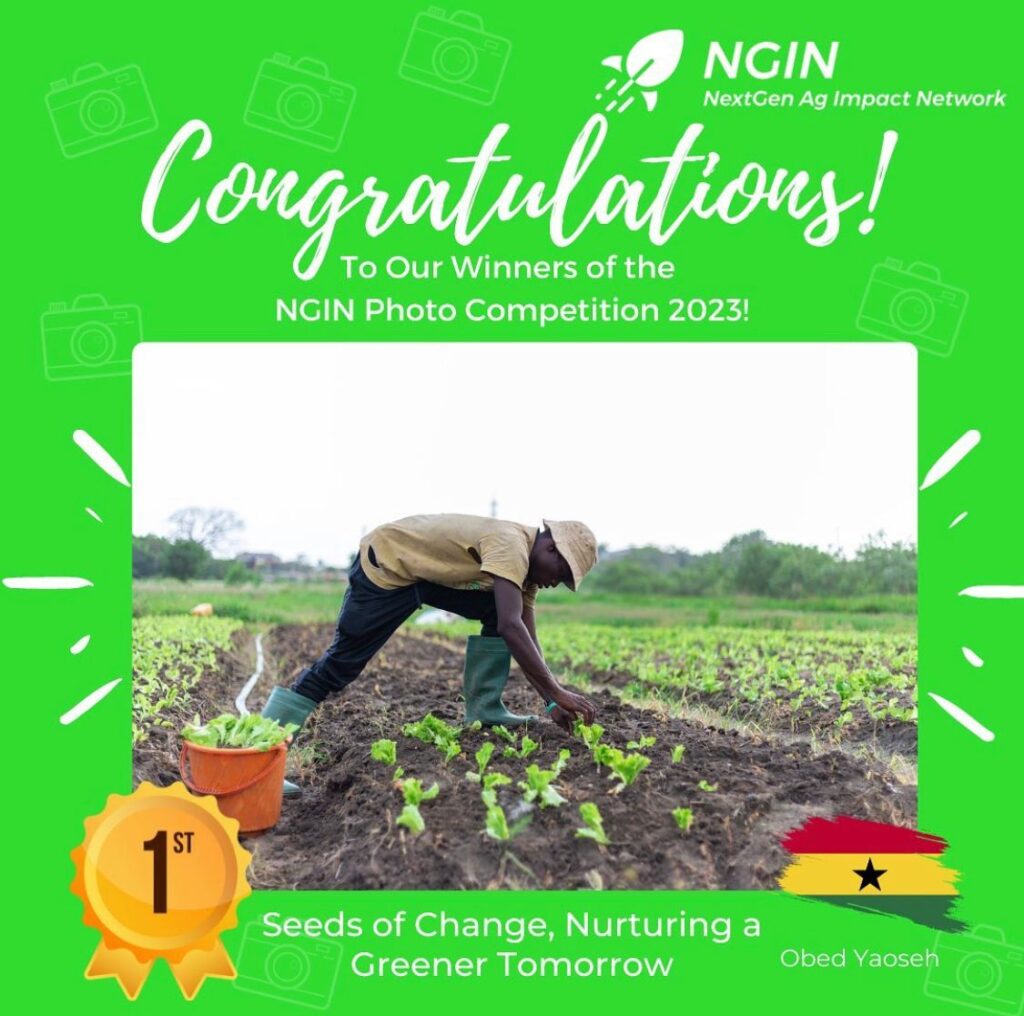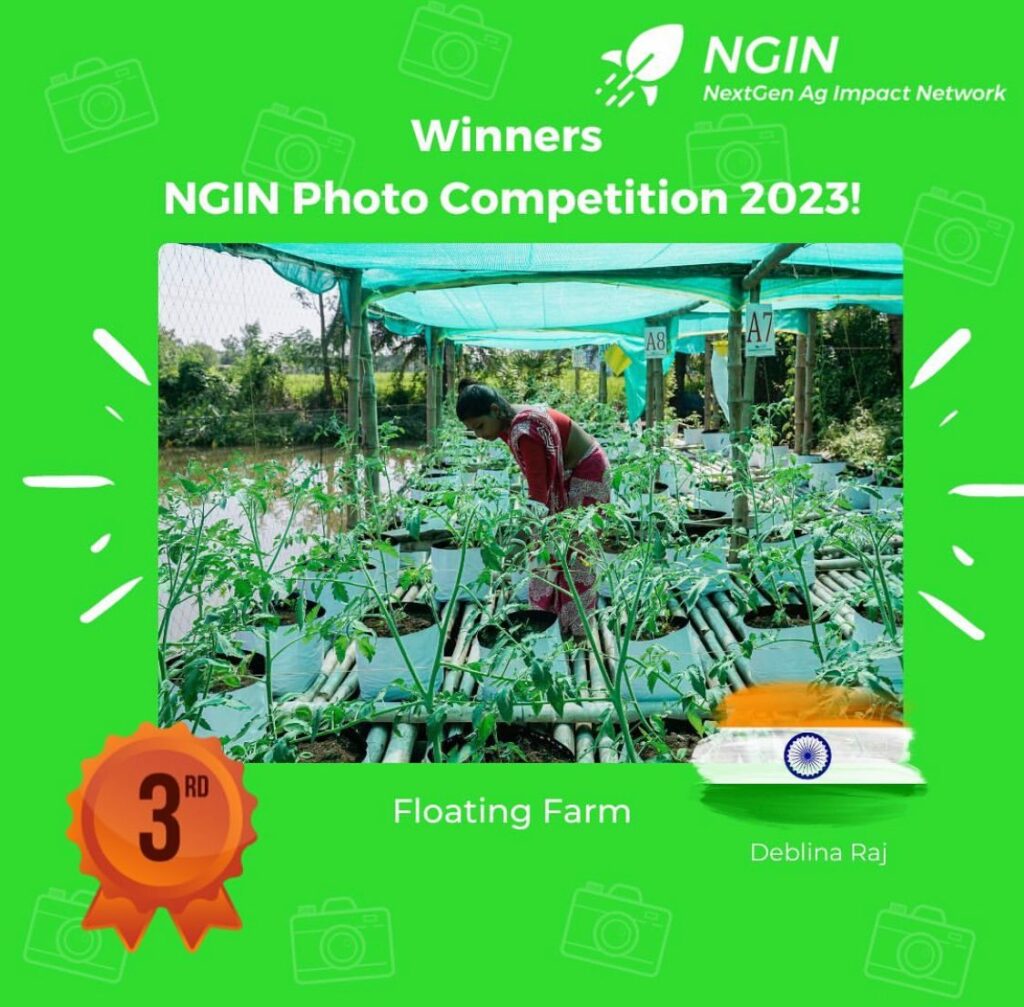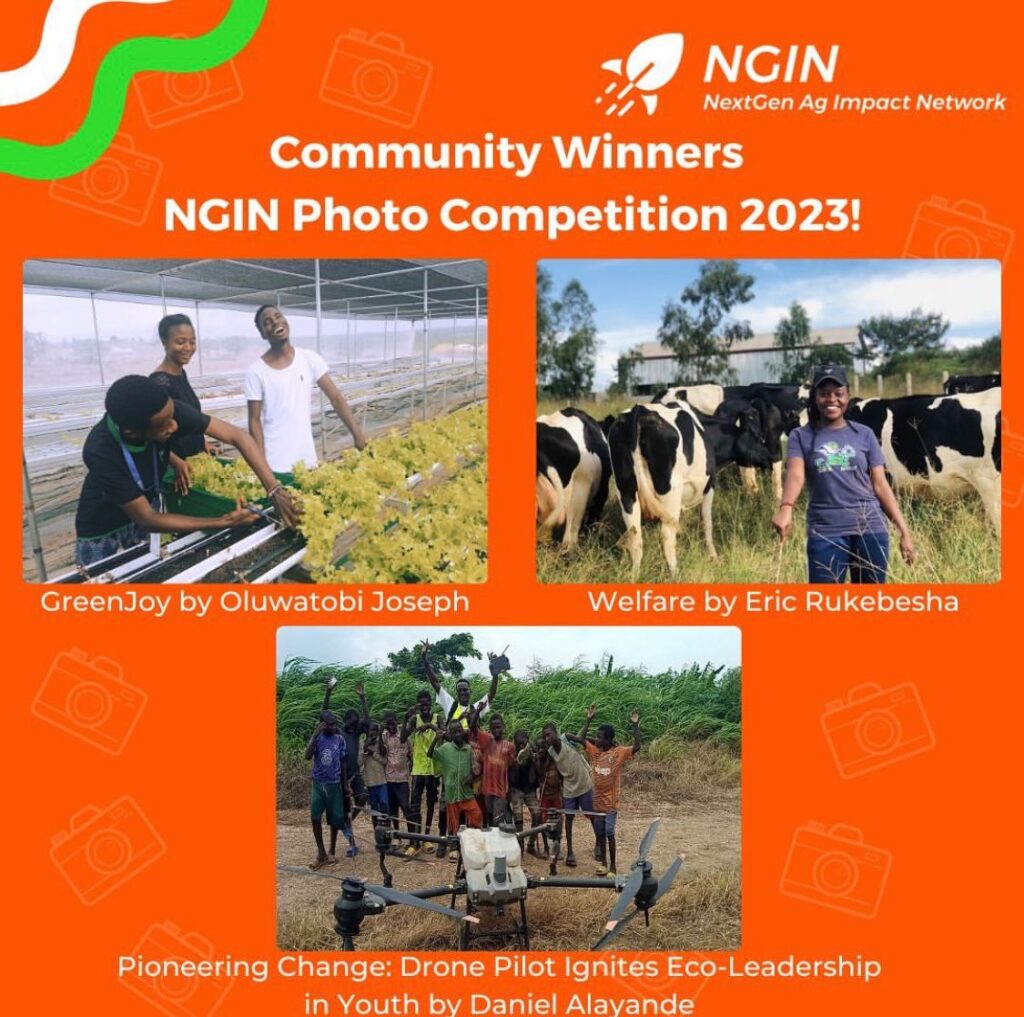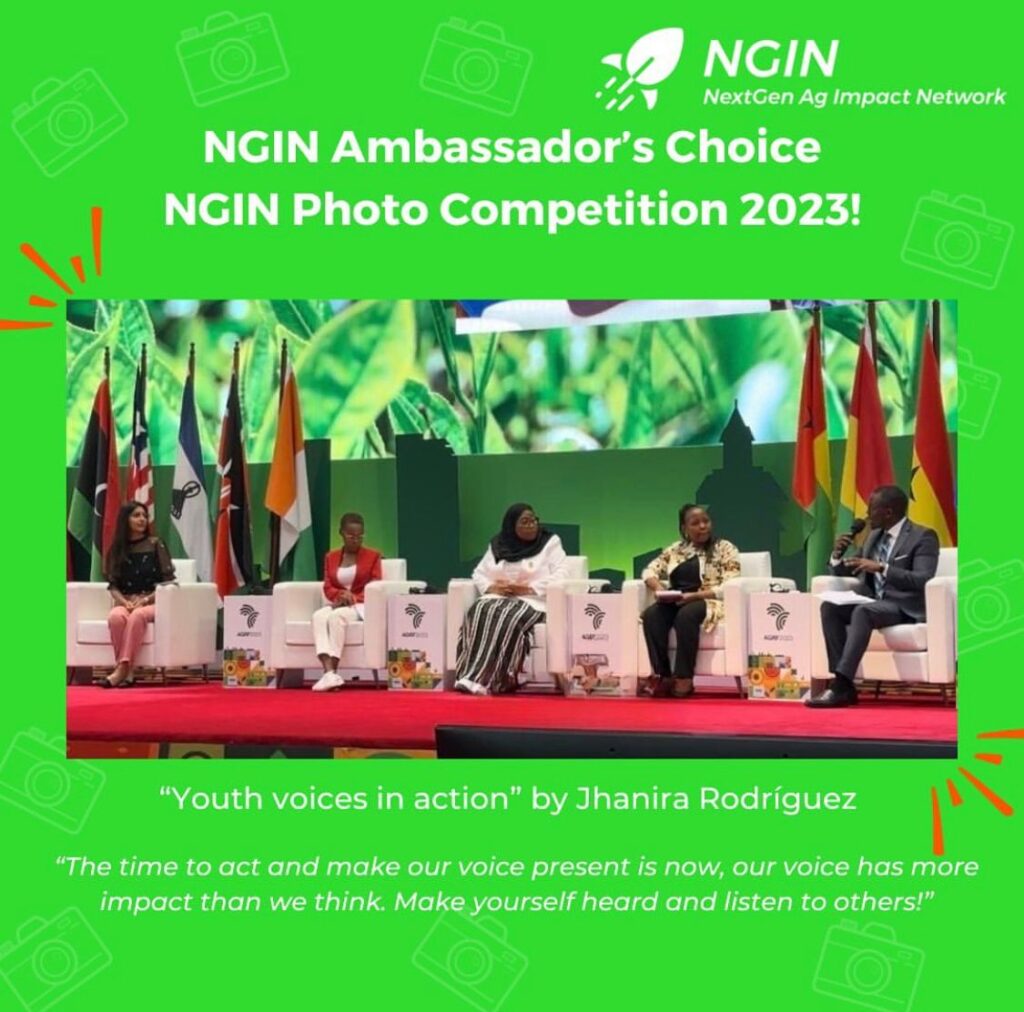Announcing the winners & community winners of our NGIN Photo Competition 2023
After intense deliberation, our jury selected 3 outstanding winners for our NGIN Photo Competition 2023 “Youth in Agriculture: Part of the Solutions to Climate Change”. Furthermore, the NGIN Community voted for their 3 favourite photos from this year’s photo competition runner-ups.
Join us as we congratulate the 3 winners of the NGIN Photo Competition 2023:

First Place – 1000 Euro: Obed Yaoseh from Ghana: Seeds of Change, Nurturing a Greener Tomorrow.
“This image symbolizes a brighter future – nurturing food security, green economies, and poverty alleviation in Ghana and Africa.
Second Place – 500 Euro: Nafesat Lawal from Nigeria: Go Green
“Let’s go green! It’s always fulfilling going green: waste no more and together we can go green!”


Third Place – 200 Euro: Deblina Raj from India: Floating Farm
“A female farmer works on a vegetable garden built on a floating platform resistant to flooding water in Sunderban region in India, one of the most vulnerable regions to climate change-induced water level rise and frequent flooding”.
A huge congratulations also to our Community Winners Eric Rukebesha from Rwanda, Oluwatobi Joseph form Nigeria, and Daniel Alayande form Nigeria, as well as to the winner of the Ambassador’s Choice prize – NGIN ambassador from Bolivia, Jhanira Rodríguez.


Thank you all for capturing the spirit of innovation, sustainability, and the power of youth in shaping the future! Through your lenses, you invite the world to learn and reflect on challenges and solutions. And you instill your passion in all of us!
A big ‘Thank You’ to everyone who participated in the Photo Competition and sent in their photos.
Thank you also to the Photo Competition sponsor, Bayer and to the NGIN Ambassadors and NGIN Board members supporting this important initiative.
Stay tuned for more initiatives amplifying the voices of our future leaders!
